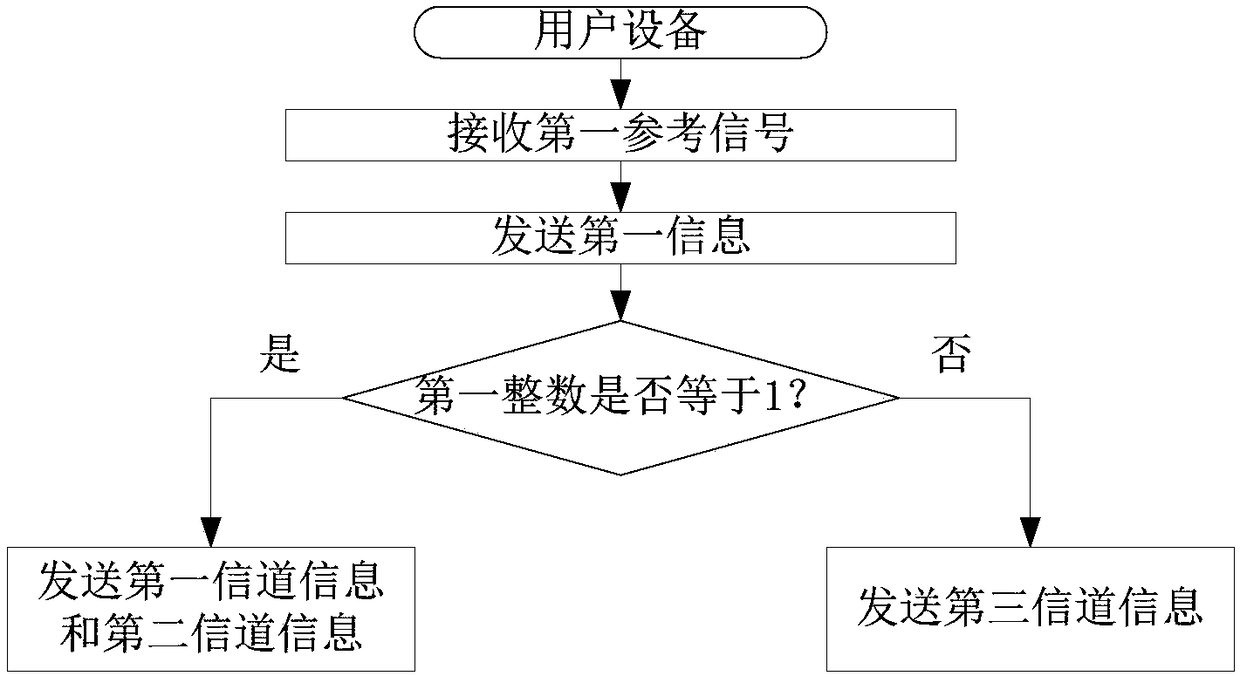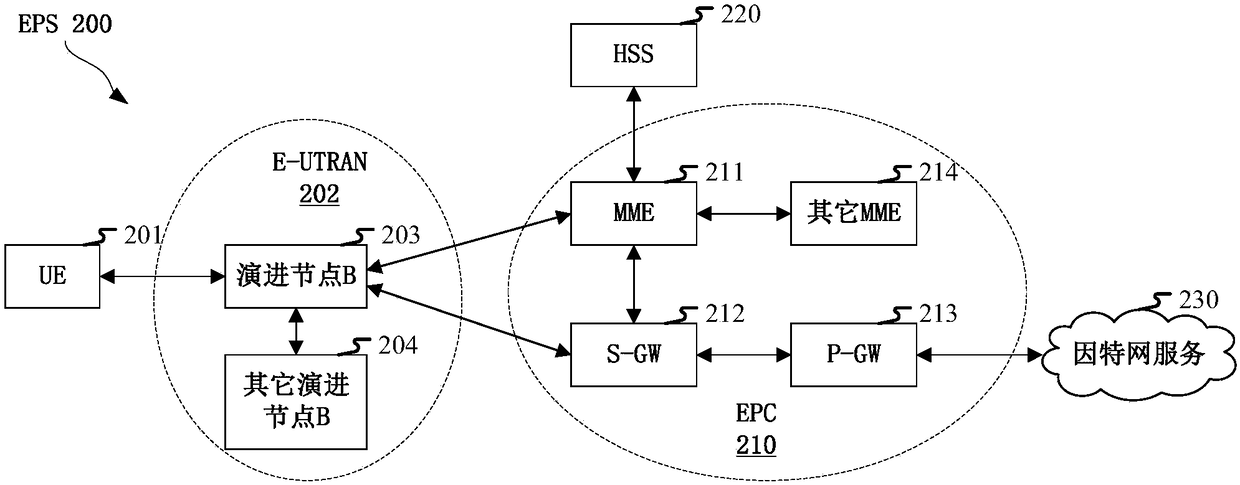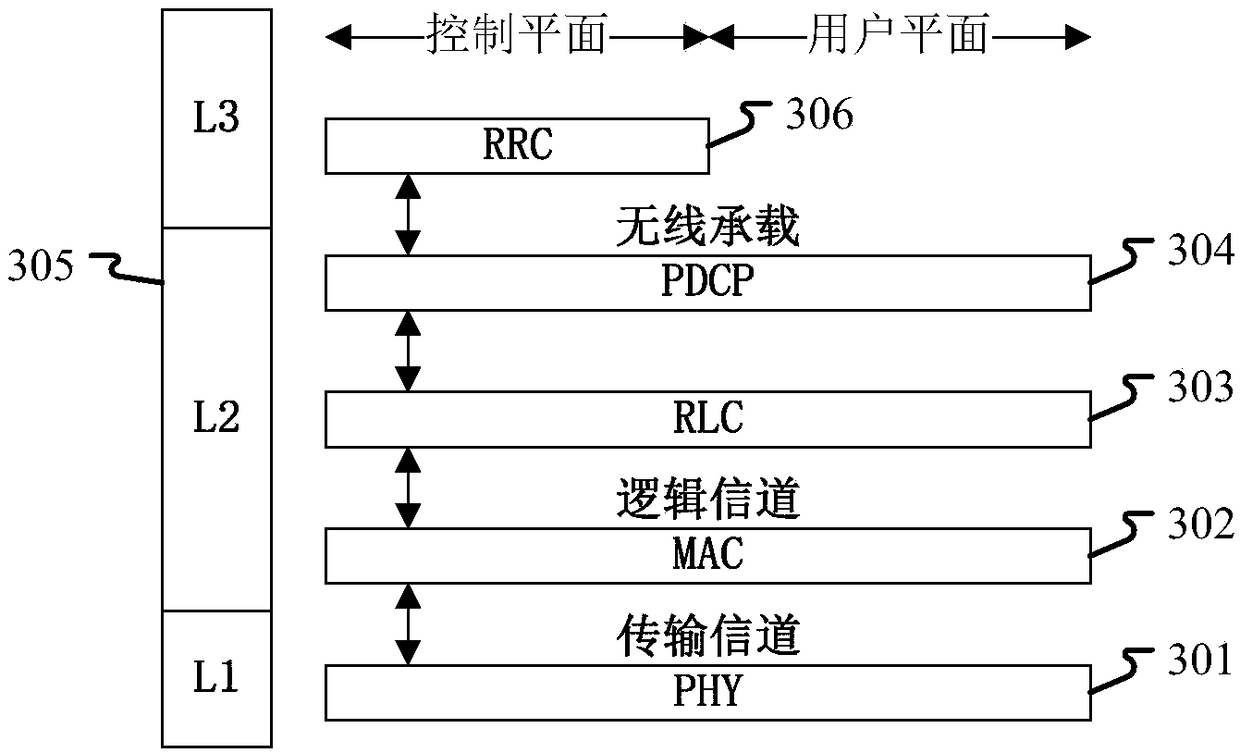Methods applied to user equipment and base station for wireless communication, and devices
A wireless communication and wireless signal technology, applied in radio transmission system, signaling distribution, diversity/multi-antenna system, etc., can solve the problem that the accuracy is difficult to meet the multi-antenna transmission
- Summary
- Abstract
- Description
- Claims
- Application Information
AI Technical Summary
Problems solved by technology
Method used
Image
Examples
Embodiment 1
[0430] Embodiment 1 illustrates the flowchart of the first reference signal, the first information, the first channel information, the second channel information and the third channel information, as shown in the attached figure 1 shown.
[0431] In Embodiment 1, the user equipment in this application first receives a first reference signal, and then sends first information, where the first information is used to determine a first integer. If the first integer is equal to 1, the user equipment sends first channel information and second channel information; otherwise, the user equipment sends third channel information. Wherein, the first integer is greater than 0, the measurement of the first reference signal is used to determine the first integer, the second channel information is used to determine L1 first-type vectors, and the first The channel information is used to determine the L1, the third channel information is used to determine L2 first-type vectors, the L1 and the L...
Embodiment 2
[0527] Embodiment 2 illustrates the schematic diagram of network architecture, as attached figure 2 shown.
[0528] attached figure 2The network architecture 200 of LTE (Long-Term Evolution, long-term evolution), LTE-A (Long-Term Evolution Advanced, enhanced long-term evolution) and a future 5G system is described. The LTE network architecture 200 may be called EPS (Evolved Packet System, evolved packet system) 200 . EPS 200 may include one or more UE (User Equipment, User Equipment) 201, E-UTRAN (Evolved UMTS Terrestrial Radio Access Network) 202, EPC (Evolved Packet Core, Evolved Packet Core) 210, HSS (Home Subscriber Server, Home Subscriber Server) 220 and Internet Services 230. Among them, UMTS corresponds to Universal Mobile Telecommunications System (Universal Mobile Telecommunications System). The EPS may be interconnected with other access networks, but these entities / interfaces are not shown for simplicity. as attached figure 2 As shown, the EPS provides pack...
Embodiment 3
[0532] Embodiment 3 illustrates a schematic diagram of an embodiment of the wireless protocol architecture of the user plane and the control plane, as shown in the attached image 3 shown.
[0533] attached image 3 is a schematic diagram illustrating an embodiment of a radio protocol architecture for a user plane and a control plane, with image 3 The radio protocol architecture for UE and eNB is shown with three layers: Layer 1, Layer 2 and Layer 3. Layer 1 (L1 layer) is the lowest layer and implements various PHY (Physical Layer) signal processing functions. The L1 layer will be referred to herein as PHY 301 . Layer 2 (L2 layer) 305 is above PHY 301 and is responsible for the link between UE and eNB through PHY 301 . In the user plane, the L2 layer 305 includes MAC (Medium Access Control, Media Access Control) sublayer 302, RLC (Radio Link Control, Radio Link Layer Control Protocol) sublayer 303 and PDCP (Packet Data Convergence Protocol, packet data convergence protoc...
PUM
 Login to View More
Login to View More Abstract
Description
Claims
Application Information
 Login to View More
Login to View More - R&D
- Intellectual Property
- Life Sciences
- Materials
- Tech Scout
- Unparalleled Data Quality
- Higher Quality Content
- 60% Fewer Hallucinations
Browse by: Latest US Patents, China's latest patents, Technical Efficacy Thesaurus, Application Domain, Technology Topic, Popular Technical Reports.
© 2025 PatSnap. All rights reserved.Legal|Privacy policy|Modern Slavery Act Transparency Statement|Sitemap|About US| Contact US: help@patsnap.com



